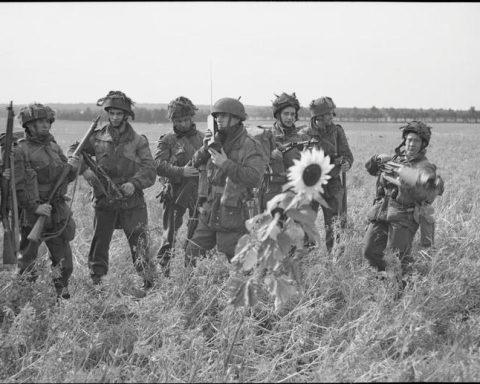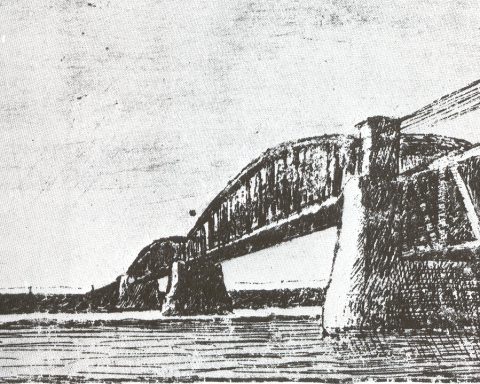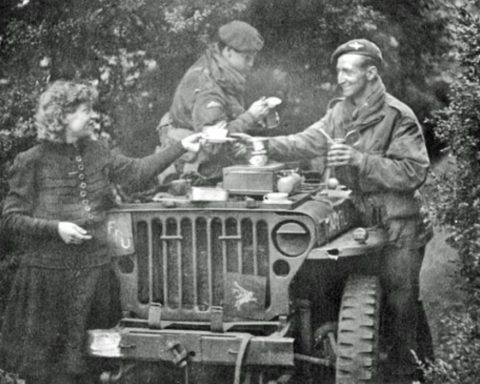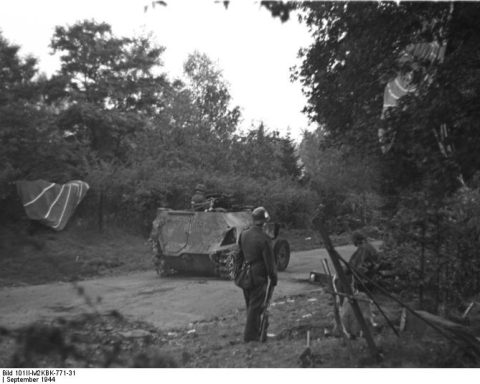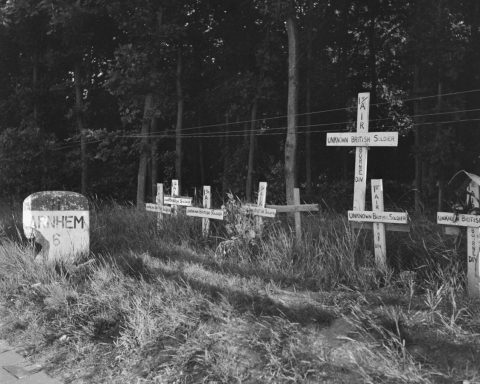Barely a day after the 4th Parachute Brigade led by General Shan Hackett landed on the Ginkelse Heide near Ede, the combat power of the brigade had been halved.
On Tuesday morning, September 19, the 156th Battalion carried out an attack on the German Sperrline on the Dreijenseweg, between Oosterbeek station and Amsterdamseweg. The much stronger German troops decimatedt he battalion.
The 10th Battalion did not fare much better at the Amsterdamseweg. This battalion also had to deal with the heavily armed troops of the 9th SS Armored Division, which, supported by armored cars and half-tracks, wreaked havoc among the British.
Due to increasing pressure from the Germans, the two battalions were forced to withdraw, while the landing of part of the Polish Airborne Brigade took place west of this fighting. It led to a chaotic retreat, with German forces capturing hundreds of British troops.
To prevent the Germans from completely destroying the 4th Parachute Brigade, General Urquhart, in consultation with General Hackett, decided in the late afternoon of September 19 to withdraw the remainder of the 4th Parachute Brigade to the south, behind the railway line. The railway embankment and the sunken track near Oosterbeek formed a good natural defense line. The British were relatively safe here.
Part of the 10th Battalion had remained on the north side of the track to protect the retreat of the other troops. The infantry units were able to slip across the railway without any problems to take up their positions on the south side of the track.
General Hackett had also remained on the north side with part of his staff to ensure an orderly withdrawal of vehicles and men. That wasn’t easy. Hackett’s diary noted that it took “enormous energy and aggression” to prevent chaos.
A mistake was made during the retreat of the 156th Battalion over the railway. Some of the battalion’s remaining troops reached the north side of Oosterbeek on the south side of the track as planned. However, almost half of the battalion moved west, to Wolfheze. The two parts of the battalion would not come together again as the fighting progressed.
The King’s Own Scottish Borders (KOSB) had been attached to the 4th Parachute Brigade after the landing because the 11th Battalion of the 4th Parachute Brigade had been sent to Arnhem in an attempt to reach the Rhine Bridge via the Onderlangs.
After the majority of the KOSB arrived at the assembly point south of the track on Tuesday afternoon, September 19, they were assigned a sector on the northern edge of Oosterbeek, where a kind of perimeter was gradually emerging.
Many jeeps from the 4th Parachute Brigade crossed the railway via two small tunnels between Oosterbeek and Wolfheze. Two large seventeen-pounder anti-tank guns that were too wide for the tunnels were pushed over the railway embankment at a place where it was not too steep.
The retreat of the vehicles was protected by an infantry group of the 10th Battalion led by Captain Queripel. Queripel had been ordered to hold a strip of forest on the north side of the track, 600 meters from Wolfheze.
The vital position was bravely defended all evening. Queripel, now wounded several times, ordered his men to withdraw when the German attack became too strong. The last thing seen of Queripel is how he covered their retreat with his pistol and a few hand grenades. Queripel was posthumously awarded the Victoria Cross.
Colonel Smyth of the 10th Battalion was at the time with the remaining men of his battalion in Wolfheze. He had less than 100 men left from his own battalion, but there were also soldiers from other units.
Soldiers warned the population to take shelter because they expected an attack from the Germans, but everything remained calm.
Tuesday, September 19, was dramatic for the British. Instead of a breakthrough to the bridge, the British had been beaten back towards Oosterbeek and Wolfheze. Instead of attacking, the British would then only be concerned with defending their position.





